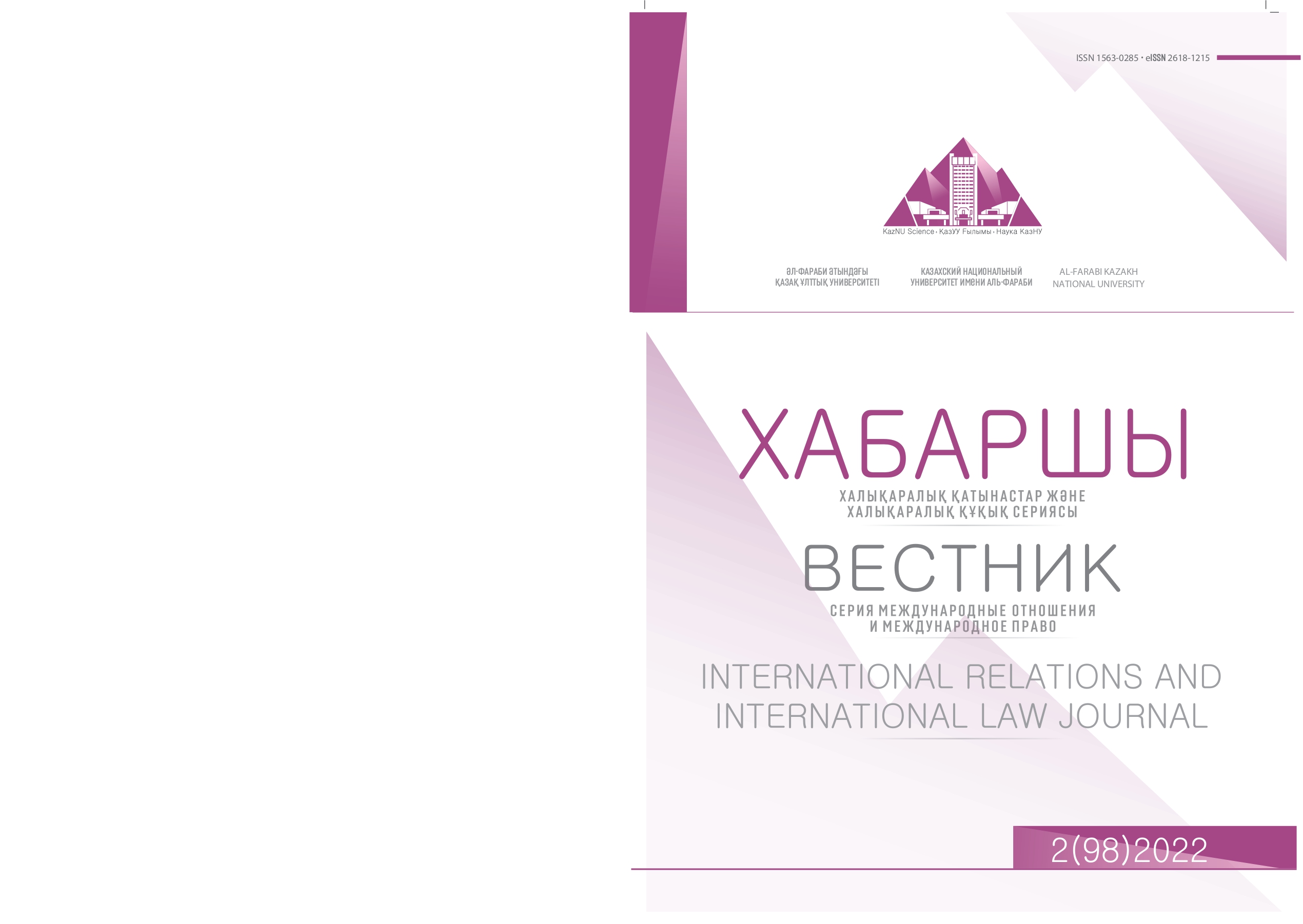Central Asia in the US Strategy: Semantic Analysis
DOI:
https://doi.org/10.26577/IRILJ.2022.v98.i2.07Abstract
The article discusses the US strategy in Central Asia on the basis of an extremely accepted document. The method of semantic text analysis will be applied. An attempt is made to compare the lexical analysis and the context of the strategy with the real US policy in Central Asia. The mechanism of semantic analysis is described. The main problem of the research is the processing and interpretation of mathematical data. They reflect the results of semantic analysis of the strategy text. The foreign policy strategy contains the official plans of the state in relation to the region. The main part and the rationale for the application of the strategy in the region are analyzed. It describes the main interests of the United States in Central Asia, projects and vision of joint cooperation. The goals and objectives adopted in the document for the near future are determined. Their implementation depends on the activity of the United States and the desire of regional partners to cooperate. Special emphasis is placed on the security of the region and the situation in Afghanistan. During the transformation of the political system, it is important to determine the algorithm of cooperation between Central Asia and the United States. The results of semantic analysis allow the use of information mathematical data and their interpretation in the analysis of the main provisions of the strategy. The conclusions can be useful when comparing with the ongoing events of real politics in the region.
Keywords: US strategy, Central Asia region, semantic analysis, goals, security, Afghanistan




